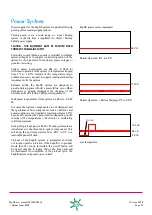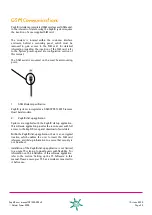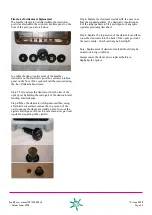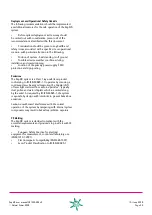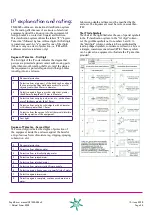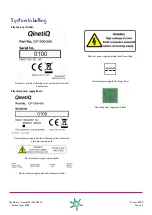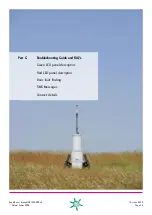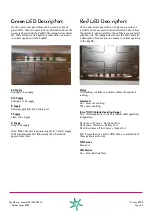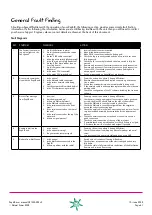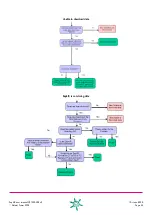
ZephIR user manual QP1009-582 v2
© Natural Power 2008
10
th
June 2008
Page 53
General overview
This section details the Health and Safety considerations
with respect to the installation, commissioning and
operation of the ZephIR system
The following image provides an overview of the ZephIR
system.
Safe Operation
The ZephIR system has been designed and built to
undertake wind-speed measurements in the anticipated
operational environments in a safe and reliable manner as
far as reasonably practical. However, as with all equipment,
there are potential hazards which must be considered in
any risk assessment undertaken before deployment and
appropriate steps taken to minimise the risk of injury or
equipment failure.
Contravening the following instructions may put the user
at risk of harm:
•
Other than the front access hatch, the louvre covers
and the battery pod lid, do not remove the sealed covers
on the system pods. Only authorised QinetiQ service
personnel should remove the sealed covers on the optics
and electronics pods and the inner PCB cover on the
battery pod lid. Removal of these covers, which require
specialist tools, will expose electrical wiring and the
possible risk of electrocution.
•
All system component parts have been designed
to be two man portable. However, each pod is heavy and
users can be injured by inappropriate handling and the
system may be damaged.
•
Personnel involved in system deployment, operation
and maintenance should be suitably trained.
Potential Hazards
The following hazards have been identified by QinetiQ
and guidance is offered to minimise the risk of injury
or equipment failure. This hazard assessment is not
comprehensive and other hazards may arise as a result of
how the systems are sited and used.
Lifting and Handling
Each system component has a bespoke transit case to
enable safe transportation of the system. Each of these
transit cases is heavy and due to their size and shape it
is recommended that, subject to the user’s own manual
handling risk assessment, at least two people are used to
lift and carry them. See Part F for details of system size
and weight.
•
All personnel associated with the deployment and
operation of the ZephIR system should receive appropriate
training in manual handling.
•
The ZephIR system should always be dismantled
into its constituent parts and packed into its transit cases
before transportation.
Electrical hazards
The ZephIR system has been assessed according to the
requirements of the European Safety Directive for electrical
equipment for measurement, control and laboratory use
(EN601010-1:2001).
•
Where the primary system power is provided from
a mains outlet supply (100VAC to 240VAC), it should be
protected by an appropriate residual current device (RCD)
to provide protection from electrocution.
Trip and other mechanical hazards
The following recommendations should be implemented
as additional measures for the safe operation of the ZephIR
system:
•
All personnel associated with the deployment and
operation of the ZephIR system should receive appropriate
training in manual handling.
•
All transit cases are stored in a safe and tidy manner
at all times.
•
Power supply cables from the primary supply should
be clearly marked and sign-posted to eliminate any
potential trip hazard.

